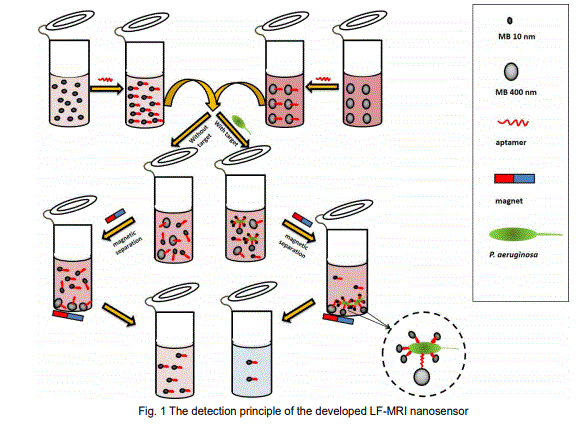2nd International Conference on Food Science and Bioprocess Technology
October 1-2, 2018 Frankfurt, Germany
An Aptasensor Based on Magnetic Relaxation Switch and Controlled Magnetic Separation for the Sensitive Detection of Pseudomonas Aeruginosa
1China Agricultural University, China
2Purdue University, USA
3Beijing Union University, China
The whole-cell aptasensor for food-borne pathogens detection has attracted much attention due to its convenience and high sensitivity. In this work, we present a low-field magnetic resonance imaging (LF-MRI) aptasensor based on two different sizes of magnetic nanoparticles, 10 nm (MN10) and 400 nm (MN400) in diameter, respectively, for the rapid detection of Pseudomonas aeruginosa. In the absence of P. Aeruginosa, the MN10-bacteria-MN400 complex was formed with the help of anti-P. Aeruginos aaptamer, which can covalent immobilization onto magnetic beads via EDC/NHS chemistry. When magnetic field applied, the complex as well as MN400 are separated rapidly and the cleaved MN10 worked as contrast agent for MRI measurement. Under the optimum condition, the LF-MRI platform allows both image analysis and quantity detection of P. Aeruginosa, with the detection limit down to 100 cfu/ml. The feasibility and specificity of the aptasensor are demonstrated in detecting real food samples and validated by using plate counting methods. Moreover, the whole-cellapta sensor provide a promising platform for the quickly, directly and accurately determination of food-borne pathogens at cell-level.




